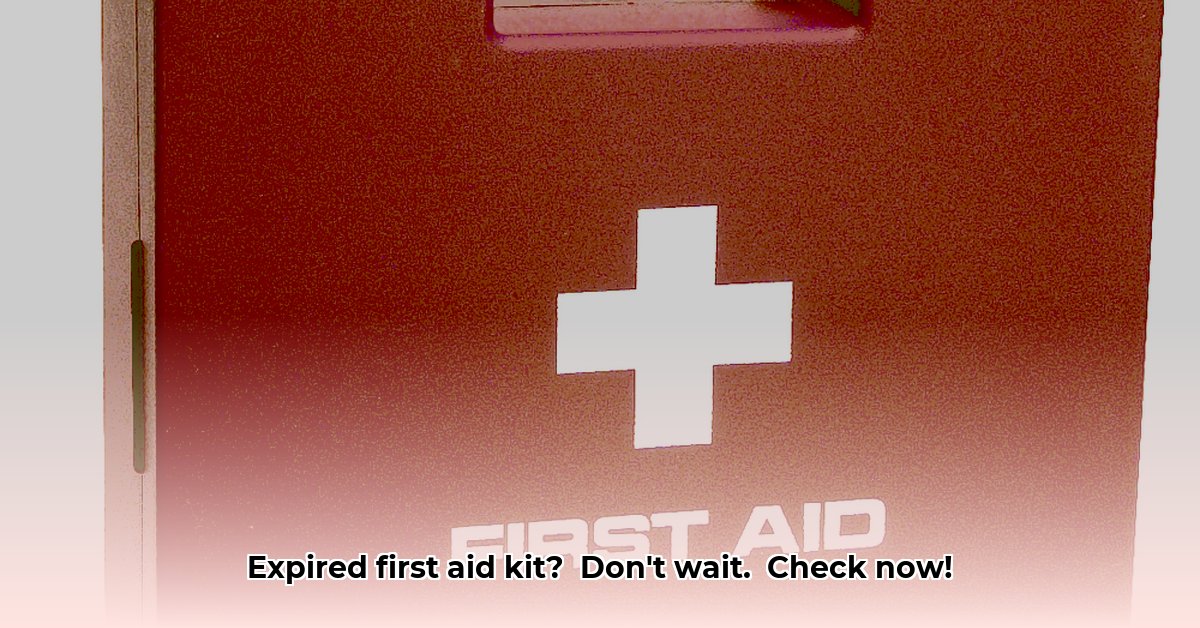Ensuring your first aid kit is stocked with effective supplies is crucial for handling emergencies. This guide provides a comprehensive overview of expiration dates, storage, and maintenance, empowering you to confidently manage your kit.
Why Expiration Dates Matter
Expired supplies can be less effective or even harmful. Medications lose potency, antiseptics dry out, and bandages lose their adhesive. Checking expiration dates isn’t just about organization; it’s about safety.
Decoding Expiration Dates
While every item should be individually checked, this table offers a general lifespan guide:
| Item | Typical Lifespan | Signs of Expiration |
|---|---|---|
| Liquid Antiseptic | 1-3 years | Color/consistency changes, unusual odor. |
| Antibiotic Ointment | 1-3 years | Separation, texture changes, discoloration. |
| Burn Ointment | 1-3 years | Similar to antibiotic ointment; check for visible changes. |
| Hydrogen Peroxide | 1-3 years | Weak fizz. |
| Aspirin (especially chewable) | 1-3 years | Crumbling, strong odor. |
| Pain Relievers (Other) | Check Label | Varies significantly. |
| Alcohol Wipes | 2-5 years | Dried out, less saturated. |
| Adhesive Bandages | 2-5 years | Loss of stickiness, discoloration. |
| Hand Sanitizer | 2-5 years | Consistency/smell changes. |
| Gauze | 5+ years | Discoloration, fraying. |
| Bandages (cloth, roller) | 5+ years | Staining, tears. |
| Tape | 5+ years | Loss of stickiness, brittle texture. |
| Scissors, Tweezers, etc. | Indefinite (if clean) | Rust, damage. |
| Instant Cold Packs | 2-3 years | Leaking, hardening. |
| Non-Latex Gloves | 5+ years | Brittleness, tears. |
Important Note: These are estimates. Always check the product label for the exact expiration date. Ongoing research suggests that some items, when stored correctly, might remain effective beyond the listed timeframe.
Inspecting Your Kit
- Container: Check for cracks or damage.
- Items: Examine each item for damage, discoloration, texture changes, and expiration dates.
- Discard: Dispose of expired or damaged items properly.
- Restock: Replace discarded items with fresh supplies. Employing a “first-in, first-out” rotation strategy helps ensure older supplies are used first.
Risks of Using Expired Supplies
Expired supplies may be ineffective, increasing the risk of infection or complications. Expired medications can lose potency or become harmful. Using expired supplies can hinder healing and worsen injuries.
Proper Disposal
Most expired supplies can be discarded in the regular trash. Medications require special care; check with your local pharmacy for take-back programs or safe disposal guidelines. Sharps (needles, lancets) belong in puncture-resistant containers. Never flush medications unless the label specifically instructs you to do so, as this can contaminate water sources.
Tailoring Your Kit
A standard kit is a good foundation, but personalization is key. Consider age, allergies, medical conditions, activities, and travel destinations. If you have children, include child-friendly supplies. For specific medical conditions like allergies or diabetes, include necessary medications and devices. When traveling, research potential health risks at your destination and pack appropriate supplies. Consulting a healthcare professional can help you personalize your kit effectively.
Storage Tips
Store your kit in a cool, dry, dark place, away from direct sunlight and extreme temperatures. Avoid humid areas like bathrooms and fluctuating temperature zones like car glove compartments. Check your kit more frequently if stored in a harsh environment.
Call to Action
Don’t wait for an emergency! Check your kit today. A well-maintained kit provides peace of mind and ensures you’re prepared. For replacement supplies and first aid training, consider checking resources like the American Red Cross or your local pharmacy.
- Adult Bento Box Ideas for Delicious and Easy Lunches - December 23, 2025
- Healthy Bento Lunch Ideas for Adults to Enjoy Lunch Again - December 22, 2025
- Glass Lunch Box Containers Offer Healthy, Leak-Proof Meal Prep - December 21, 2025










